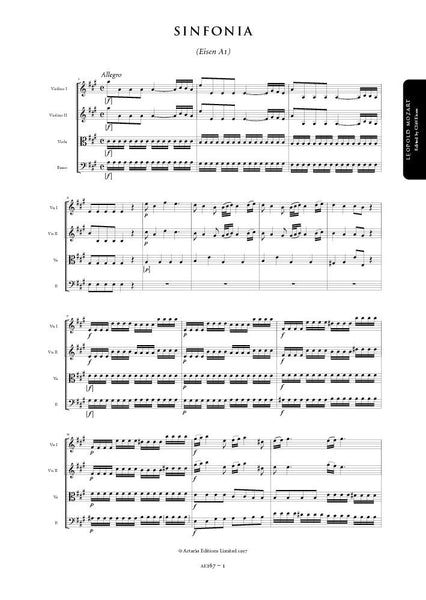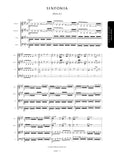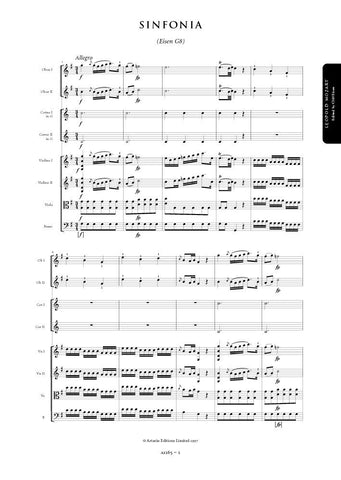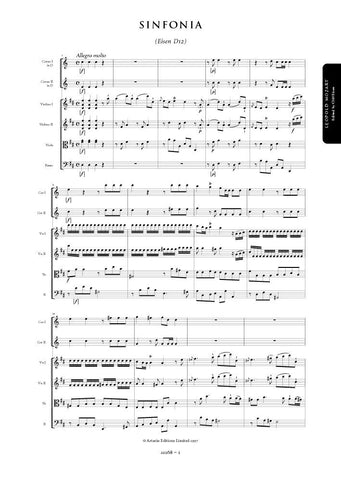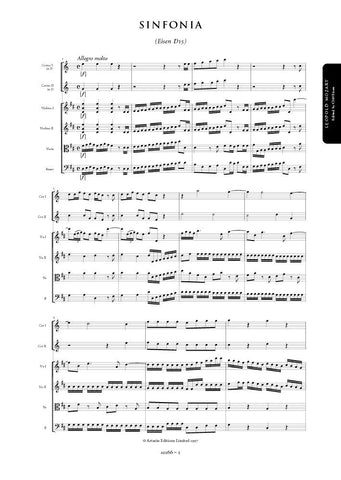Details
|
The symphony A1 (Seiffert 3.30) survives in a unique source, copied at Lambach during the 1750s. It is now housed in Augsburg at the Mozart-Gedenksttte (shelfmark MG II 47). At least two other early copies are lost: one owned by Breitkopf and advertised in their thematic catalogue for 1766; and a set of manuscript parts, discovered by Ernst Ludwig Thei at Seitenstetten, but now untraceable. Like other early symphonies by Leopold Mozart, then, A1 had a respectable if limited distribution. In this respect it is unlike other Salzburg symphonies of the 1750s and early 1760s, few of which circulated outside the Archdiocese. It is a mark of Leopold's 'international' reputation that his instrumental music found a ready audience throughout most of German speaking Europe.
Editorial dynamics and other articulations are given in brackets; editorial slurs are dotted. No distinction is drawn between staccato dots and strokes; as his violin treatise, autographs and authentic performing parts show, only one symbol was employed by Leopold Mozart (and later byWolfgang): the stroke, which indicates varying shades of accent and articulation, depending on the context. The only instance in which Leopold notated dots was under slurs. Additionally, slurs have not been automatically added to connect grace notes and main notes. Although Mozart's Gründliche Violinschule prescribed the universal performance of such slurs, even in cases where they are not notated, irregularities in musical orthography, changes in musical style, and the specific contexts in which grace notes appear, all suggest that this 'rule' may not have applied in numerous instances. As with most aspects of eighteenth-century performance, the performance of slurs, articulation, tempo and ornamentation are subject to 'good taste'. Obviously wrong notes and rhythms have been corrected without comment.
Cliff Eisen
|




